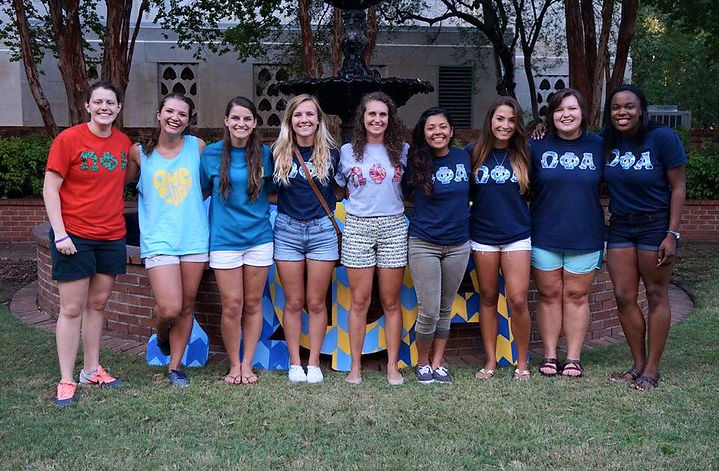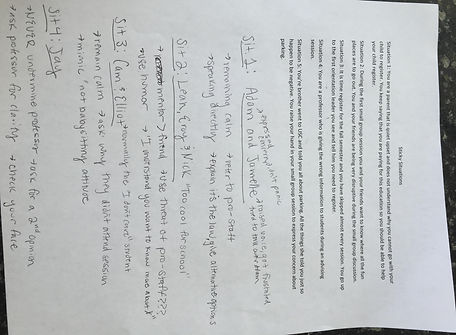
Think Win-Win
It’s quite simple. I love to win. Whether it’s an intramural flag football championship, a game of Pictionary or even getting a higher grade on the last test than the student sitting next to me, winning feels really good. It turns out, I’m not alone. In my POLI 421 class, Law & Contemporary International Problems, we discussed the behavior of different parties in international law react to one another and ultimately resolve conflicts through laws. One of the principles discussed in the class in an attempt to explain why states act in the way that they do is called prisoner’s dilemma. The prisoner's dilemma is a canonical example in game theory that shows why two purely "rational" individuals might not cooperate, even if it appears that it is in their best interests to do so. The notes below include a chart explaining the different options prisoner’s dilemma presents and its connection to international actor behavior. It is human nature to react selfishly in a situation that involves conflict, however I have come to the conclusion that in order to resolve conflicts that withstand time and are effective, it is vital to create situations that go against this principle. That is, always thinking about how to create win-win situations.
I consciously encountered conflict resolution strategy as an orientation leader. I saw firsthand what it meant to approach a conflict while deliberately attempting to let both parties “win”. Attached below is an activity that the orientation leaders put together during intensive training in order to practice handling difficult conflicts. While practicing, we had to maintain a sense of professionality while keeping all parties in each situation content and feeling like the conflict was resolved. The most challenging aspect of the exercise was that there was no “right” way to handle a situation. Additionally, there was no way to know how the opposing party would react to your suggestion to solve the conflict. Although it was difficult at first, practicing approaching situations with a win-win mentality was valuable to my experience as an orientation leader. Being a part of orientation was a balancing act of making people with competing interests satisfied and giving them confidence in their decisions.
One of the strongest examples of creating a win-win situation came with the advisement of students. There were three parties involved; the parent(s), advisor and student. The parent is most concerned with getting their child in the classes they need, the student wants to create a schedule with classes that aren’t too late or too early, and the advisor wants to get the students in the classes that will qualify them for their degree. When there is a discrepancy in what any of the three parties want, tension is normally high because of the high stress environment. Using conflict resolution skills that I learned in POLI 215, Introduction to Leadership Studies, I know that maintaining the relationship between both parties is essential to creating a win-win solution. Separating interests and people aides in maintaining that relationship. Additionally it is essential to create a variety of options to help both sides. Sometimes these variations of solutions lean more toward a specific side so finding one that both sides find to serve their interests is vital. Throughout orientation, it was necessary to actively listen to the requests of all parties and find viable solutions that pleased everyone involved. Coming up with multiple options required patience and persistence. I had to continually come up with multiple options of student schedules in order to satisfy the parent, student and advisor. Rather than choosing a party to “win” and a party to “lose”, I went into every advisement with the mentality that I was going to produce a schedule that everyone would agree on.
Most people, when dealing with conflict, focus on what they are getting out of the result. Often times, this mindset results in that person making a decision by assuming the worst in the other person or not considering what the other person is thinking. As Vice President of Omega Phi Alpha, I further realized that the most effective conflict resolution technique was to think about creating win-win situations. By doing this I am able to achieve my goal as well as my sister’s goal while maintaining the trust between us. For example, there were two sisters that both felt the other was targeting them. As Vice President, I am responsible for all behavioral conflicts so I sat both parties down and came up with a solution that both girls agreed on. Approaching the situation with the intention of creating a win-win solution fostered the growth of meaningful and strong interpersonal relationships between the girls and me. There are always competing interests between members of the sorority, the executive team and at large chapter and amongst chairs, however when dealing with conflict finding a solution that lets both parties win creates the most long term success and happiness. Although it is most natural to enter into an engagement with personal interests above all others’ interests, in order to create the best conflict resolution plan one must think win-win.



